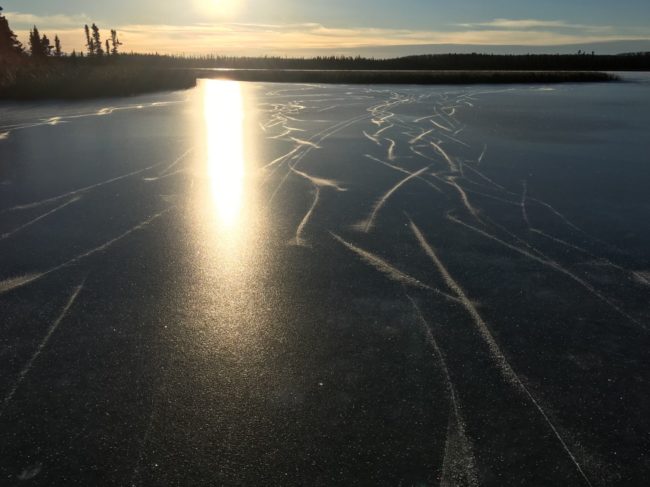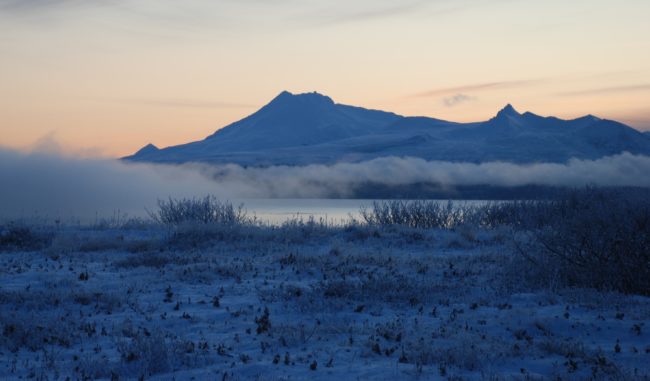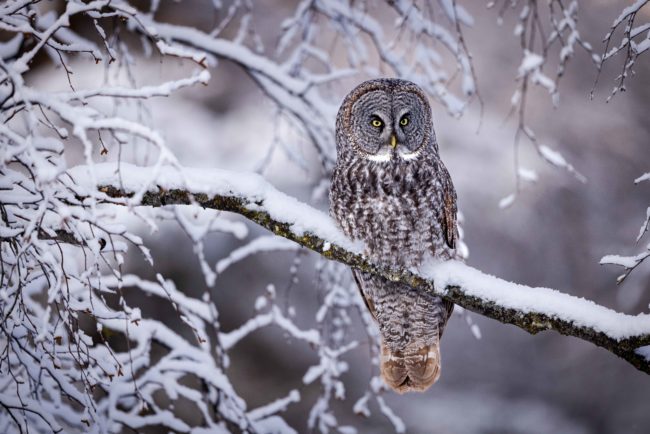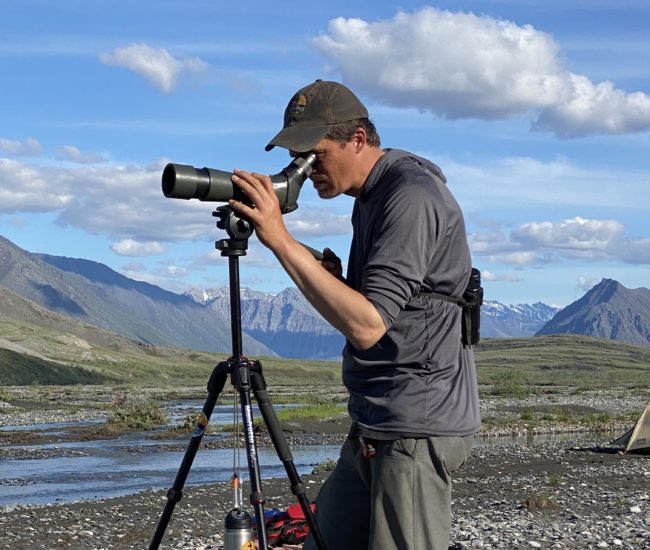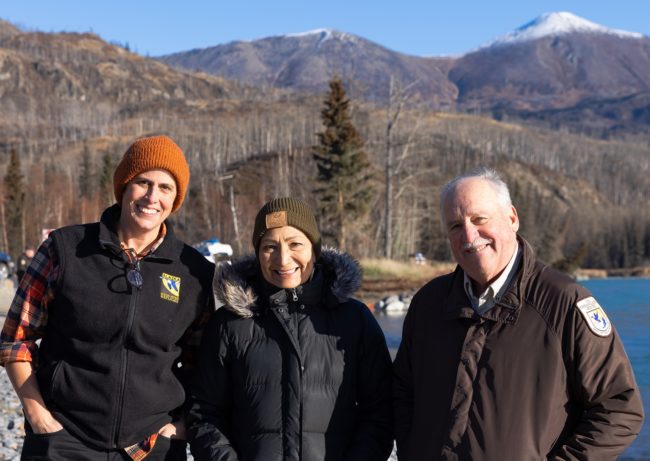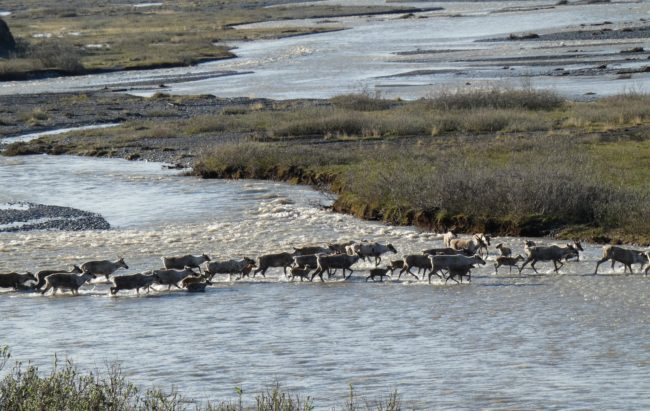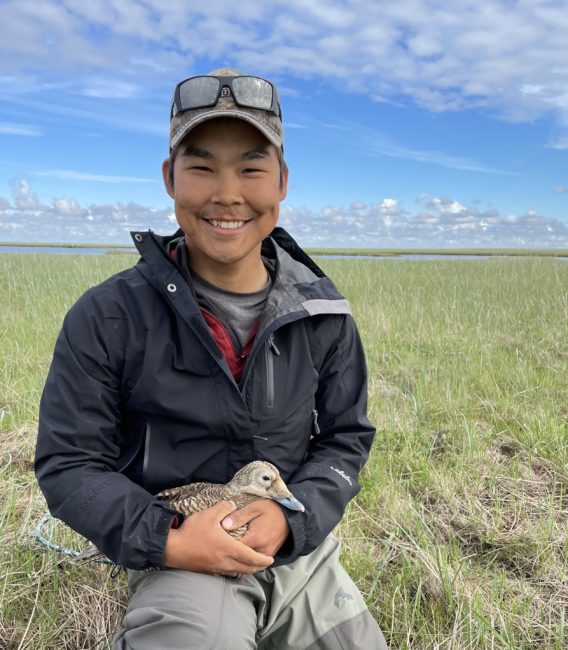Presented by the Gaia Girls, Laura Pillifant and Mary King
The recording of the zoom meeting can be found below. Please note that this presentation was held before a live audience at Kenai NWR.
January Advocacy Report
by Caroline Brower, Vice President for Advocacy
With the holidays wrapped up, and Congress back in session, talk has returned to the budget and potential budget cuts. We as Friends can’t do much about whether or not Congress argues itself into a government shutdown, but we DO have the ability to advocate and lobby– yes, lobby– on behalf of wildlife refuges.
Two budget deadlines are upcoming. The first is January 19, includes four of the twelve appropriations subcommittees, but it does not include wildlife refuges. The second deadline is February 2, and includes the remaining eight subcommittees, such as the Interior Department and refuges. House Speaker Mike Johnson and Senate Majority Leader Chuck Schumer agreed this week to a top-line budget number, or basically a cap of what can be spent government-wide this year. We have not seen an Interior-specific number yet. This top-line agreement is a good first step towards preventing a government shutdown, but it is no guarantee.
The biggest concern Friends have regarding the budget for the rest of this fiscal year (FY2024, which ends September 30) is that the House is determined to cut funding. Refuges are already badly understaffed and desperately in need of additional funding. The only way we can get more is to lobby for it. The House included a 10% cut to refuges in their FY2024 budget bill, which would hollow out the System and close dozens of refuges. The Refuge System did an examination of their 568 refuge units several years ago, and determined the true need of the Refuge System (nationwide, not just in Alaska) at $1.5 billion. Current funding is ⅓ of that– $541 million.
The best way you can help Alaska’s 16 national wildlife refuges in the next few weeks is to ask Senator Murkowski , Senator Sullivan , and Representative Peltola to keep refuge funding strong. Tell them a personal story about how important these refuges are to you and ask them to keep funding strong, at least equal to the current funding levels of $541 million. The links attached to each of their names will take you to the email form on their websites.
Thank you for your advocacy and your support for all of Alaska’s wildlife refuges!
Nunivak Island: Home on the Range
By Kyra Neal, Wildlife Biologist, Yukon Delta Refuge
About 30 miles offshore from where the Kuskokwim River meets the Bering Sea, nestled in Shoal Bay, there is a small island village called Mekoryuk, home to around 200 mostly Yup’ik and Cup’ik people. In this place, the mayor is the same person who takes the trash trolley to the transfer station, the city office workers are the same people who teach kindergarten, the reindeer caretaker is the same person who jump started your ATV, and the elders stop by the roadside to share wisdom of their years growing up and to welcome you to their community on Nunivak Island.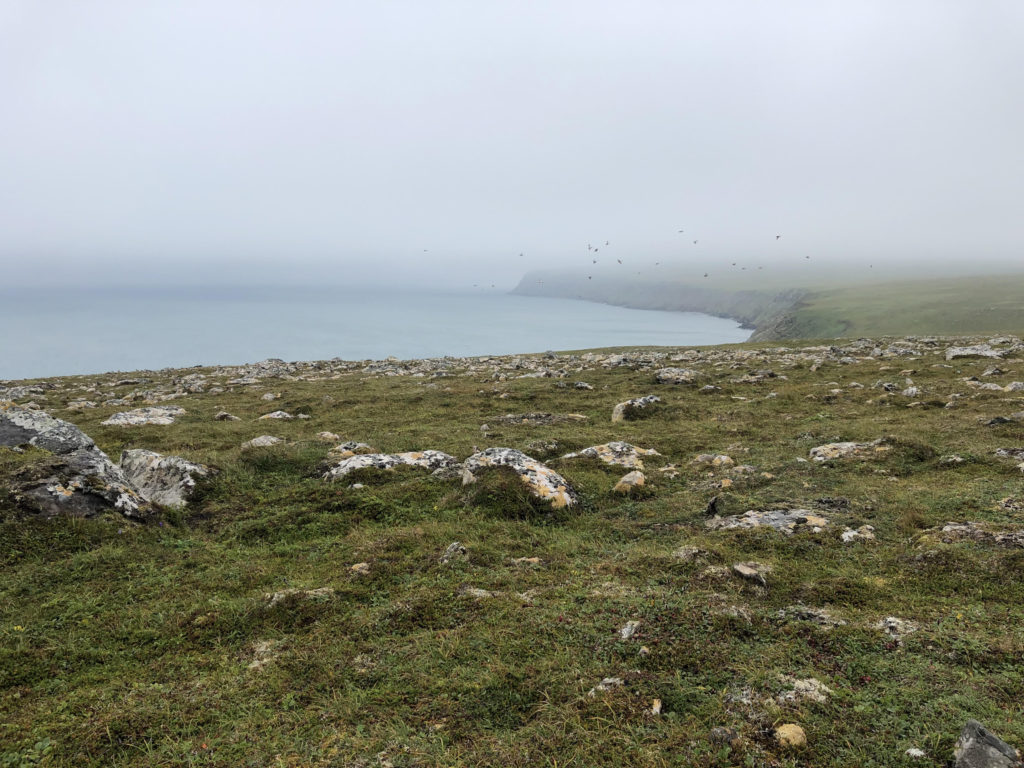
Data gap plot on the western side of Nunivak Island in the Bering Sea.
Nunivak Island is also home to 700 muskox and 3,000 reindeer. Grazing has occurred on Nunivak Island for hundreds of years, first by caribou until they were extirpated in the late 1800s and then by introduced reindeer and muskox in the last century. The condition of their range was evaluated intensively in 1989 with 10 trend plots involving 40 quadrats and two transects for each location.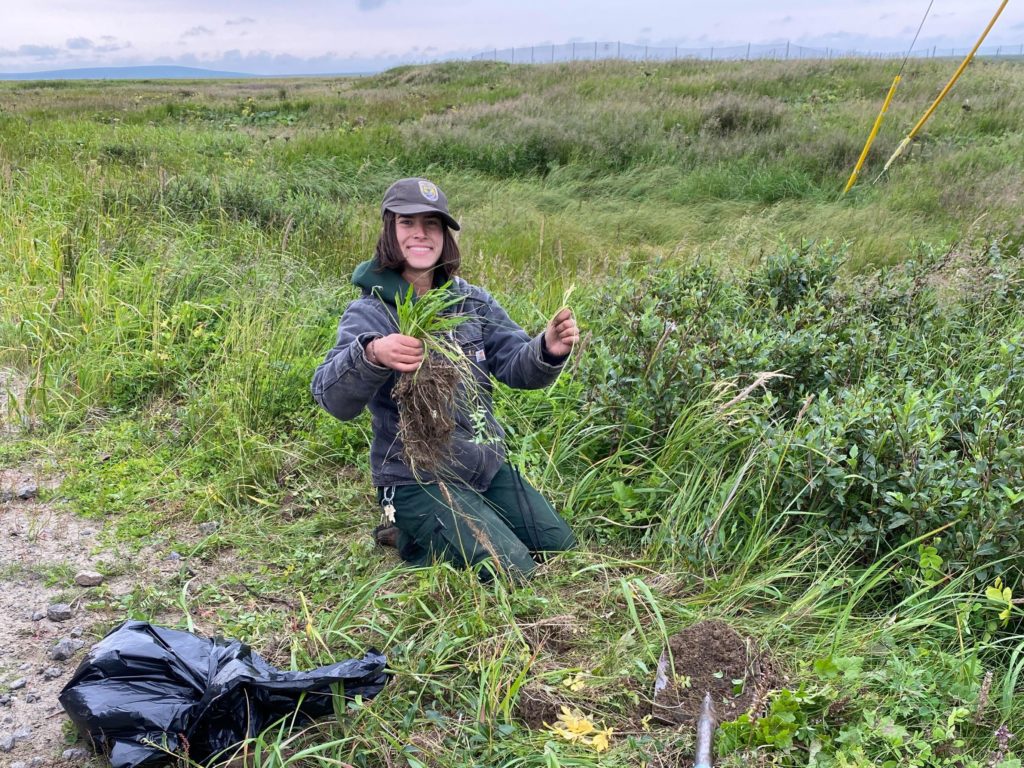
Kyra Neal pulling fall dandelion near the Mekoryuk sewage lagoon road.
Since 1989, Nunivak Island has become increasingly connected to mainland Alaska with more flights, boating, muskox hunting, and tourism. Consequently, Yukon Delta National Wildlife Refuge partnered with the Natural Resources Conservation Service (NRCS) in 2022 and 2023 to reevaluate the range condition and survey the island and village of Mekoryuk for invasive species at two different spatial scales. One is a fine-tooth comb and the other is more of a broad-stroke brush.
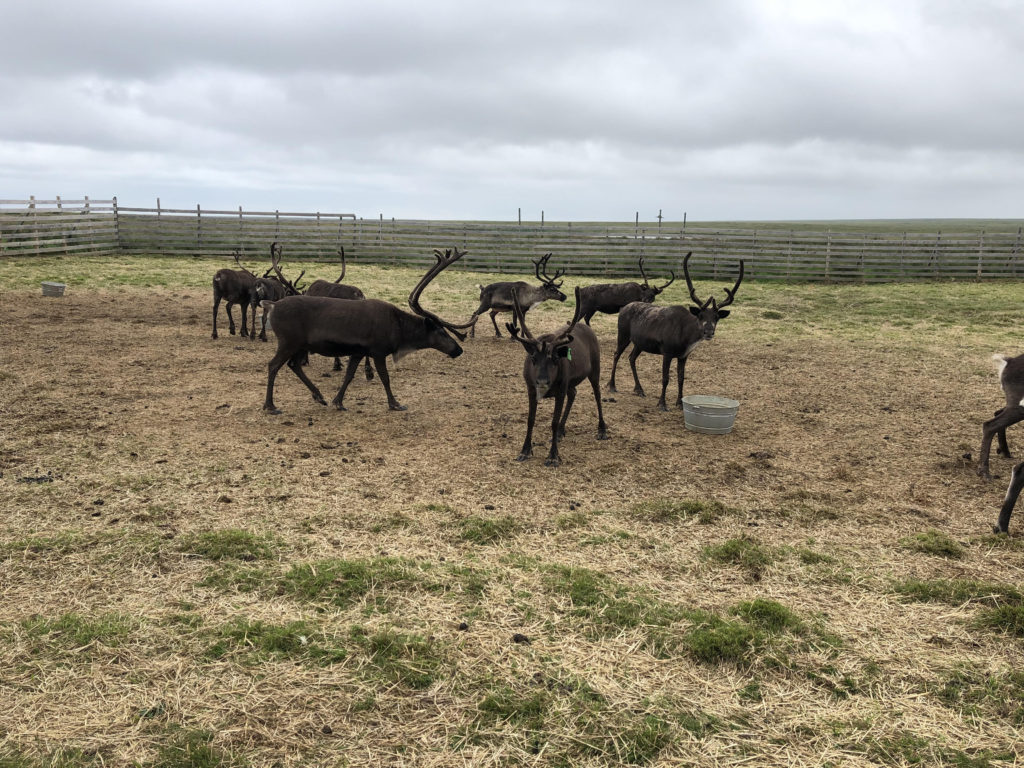
Reindeer at the facility in Mekoryuk
Let’s start with combing the luxurious locks of the tundra. Arriving at each plot via an R-44 helicopter, we applied the same methodology to evaluate range that was used in 1989. Within these 40 20×50 cm quadrats, we estimated ground cover for each species including lichen, shrubs, forbs, grasses, bare ground, rocks, and even scat. In 10 of these quadrats, we measured production by a double sampling clip and weigh method. Changes in ground cover and productivity will tell us how grazing has affected the range. Certain lichens are favorites of reindeer and can be depleted to bare ground exposure when overgrazing occurs. For invasives, we scouted disturbed areas in Mekoryuk by foot and in our monitoring areas, combing the tundra for anything out of place. Roads, barge ports, ATV trails, airstrips were all observed by foot in search of non-native species and plots with a high percentage of bare soil.
Pulling out our broad-stoke brush, range was surveyed between the established transects. Using NRCS reconnaissance methods, we scored range conditions based on evaluating the amounts of lichen, bare soil, presence of grazing and scat on two acres between transects. For our invasive species broad brush, we evaluated bare soil vectors for invasive species to get to the interior of the island. We used aerial imagery of ATV trails and disturbed areas to help us identify potential hot spots for introduction of non-native plants to the ecosystem.
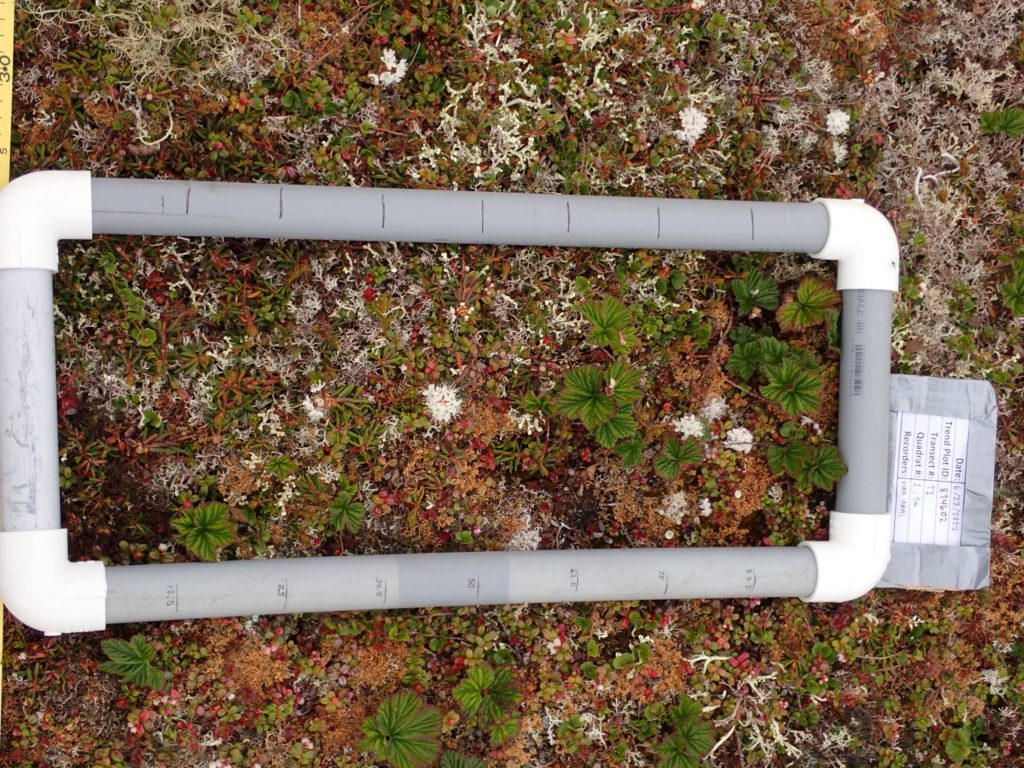
One of our 20×50 cm quadrats used for sampling ground cover to assess the condition of the range.
What did we uncover? Well, good news and bad news. The good news is there are no invasive species on the Yukon Delta Refuge. The bad news is we did find some fall dandelion on the road leading to the airport and up to the sewage lagoon in Mekoryuk. We removed as much of the fall dandelions as could be done by hand and notified the village council president of our finding. Our range evaluation showed that the western side of Nunivak was heavily grazed, but the rest of the island has high quality grazing range for reindeer to enjoy!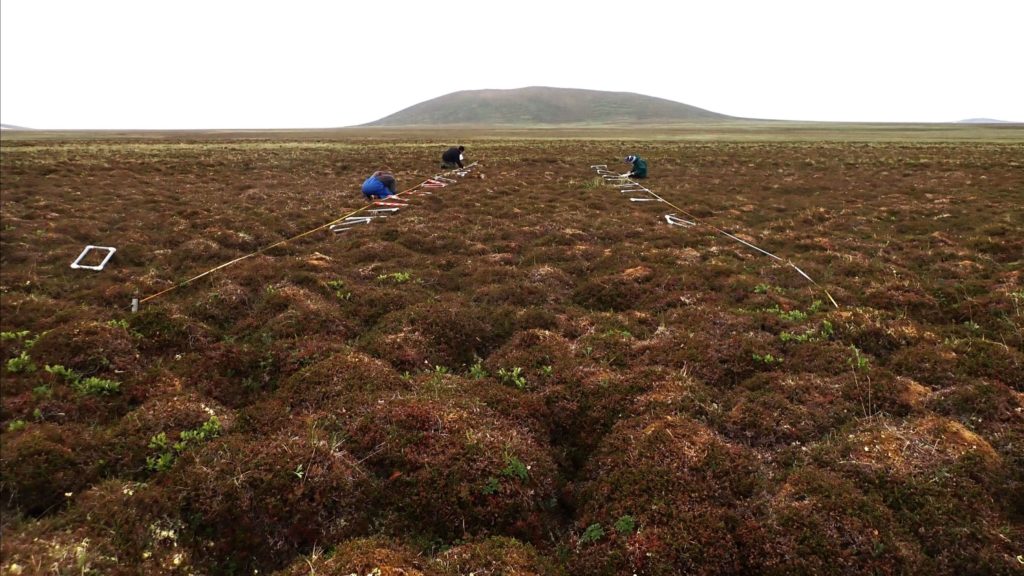
Plot transects laid out by Karin Sonnen and Katie Schmidt (L) while Blaine Spellman collects data (R) on an established transect. All three work for the Natural Resources Conservation Service.
December Advocacy Report
Happy Holidays! With Congress scheduled to go into recess at the end of this week (December 15th), we are looking at a slow pace on Capitol Hill for the next month.
On November 30th, a hearing was held in the House of Representatives on a bill introduced by Rep. Mary Peltola (D-AK) and supported by both Senators Murkowski and Sullivan that would reinstate the oil development leases in the Arctic Refuge which the Biden Administration recently canceled. Members from the environmental community testified against such a bill, and while it is likely to pass the House, it will probably not be brought up in the Democrat-controlled Senate.
The more critical issue happening right now for wildlife refuges is the defunding of the entire National Wildlife Refuge System. The System has lost nearly $200 million in capacity over the last twelve years, and this loss of funding is eating away at the ability of refuge managers in Alaska to keep and hire staff. Most Alaska refuges have half the number of staff they had a decade ago, and when folks retire or change jobs, their positions are not filled. And without adequate staffing levels, it is extremely difficult to maintain the programs that benefit the communities in and around refuges.
For example, Yukon Flats and Kanuti Refuges are likely going to be complexed under one management team. As staff retire or move to different jobs, their positions remain vacant or are being taken off the books. These remote refuges, 12.7 million acres total (larger than the state of Maryland), will only have a few staff members. Other refuges are losing biologists, there are not enough pilots, and visitor services staff are in short supply. These Refuge staff members bring environmental education programs to schools and the community and biological expertise and research ability. The loss of pilots and budget for flights means that remaining staff are unable to access the vast majority of their off-road refuges and wildlife surveys become impossible.
Congress is in a budget-slashing mood, but we can’t let them eliminate all management on refuges. Staffing levels are so low right now that Alaska’s refuges are functioning at a bare minimum, with visitor centers only open for a few hours per day and programs are getting canceled all the time. Any more cuts are going to close visitor centers and eliminate wildlife surveys that are, in some cases, decades old. The situation is dire.
Senator Murkowski is the Ranking Republican on the Senate subcommittee that determines funding for the Refuge System. She can change this, if she wanted to. She responds to her constituents. Can you take a few minutes to write to her to ask her to increase funding for the National Wildlife Refuge System to add at least $100 million to current budget levels? Her office address in Anchorage is 510 L Street, Suite 600, Anchorage, AK 99501.
Thank you!
Birding the Arctic National Wildlife Refuge with Bird Guide Aaron Lang
Monday, December 4, 5:30pm, AKT.
Live in Homer at Alaska Maritime Wildlife Refuge’s Visitor Center or on Zoom.
You can view the recording of the live event below:
Aaron Lang will share stories and stunning photography at the Kachemak Bay Birders monthly meeting about the unique wilderness birding experiences to be found in the Arctic National Wildlife Refuge. All are welcome to attend or zoom in. Aaron, widely considered one of Alaska’s top birding guides and a downright nice guy, will draw from his 21 years of exploring, birding and guiding in the Arctic Refuge. Aaron is the co-owner of Wilderness Birding Adventures based in Homer and was the guide for the Friends of Alaska National Wildlife Refuges’ trip to the Marsh Fork of the Canning River in the Arctic Refuge last summer.

Aaron collecting feathers from an abandoned nest cavity for Gray-headed Chickadees. No birds were found on the 2023 trip. The feathers were collected for possible DNA analysis. pc: Nancy Deschu
Approximately the size of South Carolina, the 19-million-acre Arctic National Wildlife Refuge has no roads or facilities. The lands and waters are a critical nursery for birds who migrate and winter throughout North America and beyond and is an important home for iconic resident wildlife such as caribou, musk oxen and polar bear. The refuge presents a unique, wilderness birding experience and contains the largest designated Wilderness within the National Wildlife Refuge System. Birds commonly found along the Arctic’s rivers include nesting shorebirds such as Wandering Tattler, Upland Sandpiper, and American Golden-Plover and Golden Eagles, Arctic Warbler and Smith’s Longspurs.
This program will be recorded and posted HERE within a few days.
Aaron began birding in southern Minnesota at age 11 when the curious behavior of a Northern Flicker caught his eye, and he’s been hopelessly addicted to birding ever since. Combining bird-related work with a passion for travel has led him to adventures in Brazil, Tibet, Thailand, Vietnam, Cambodia, and Bhutan. After settling in Alaska, Aaron spent several years running environmental education programs for the Prince William Sound Science Center in Cordova, all while scheming on how to turn his birding obsession into a career. In 2002, he began guiding for Wilderness Birding Adventures and, after 11 years, Aaron and his wife Robin bought the business.

Smith’s longspurs were frequently spotted on the Marsh Fork last summer. PC Jerry Britten
Aaron has served on the Alaska Bird Checklist Committee since 2009, the American Birding Association Checklist Committee (2015-2022), and the board of Audubon Alaska since 2019. He currently holds the Alaska Daydream Big Day Record for the most species of birds thought about in one 24-hour period.
This Kachemak Bay Birder Meeting is cosponsored by the Alaska Maritime National Wildlife Refuge with the zoom and recording capabilities provided by Friends of Alaska National Wildlife Refuges.
Secretary Haaland visits the Kenai Refuge
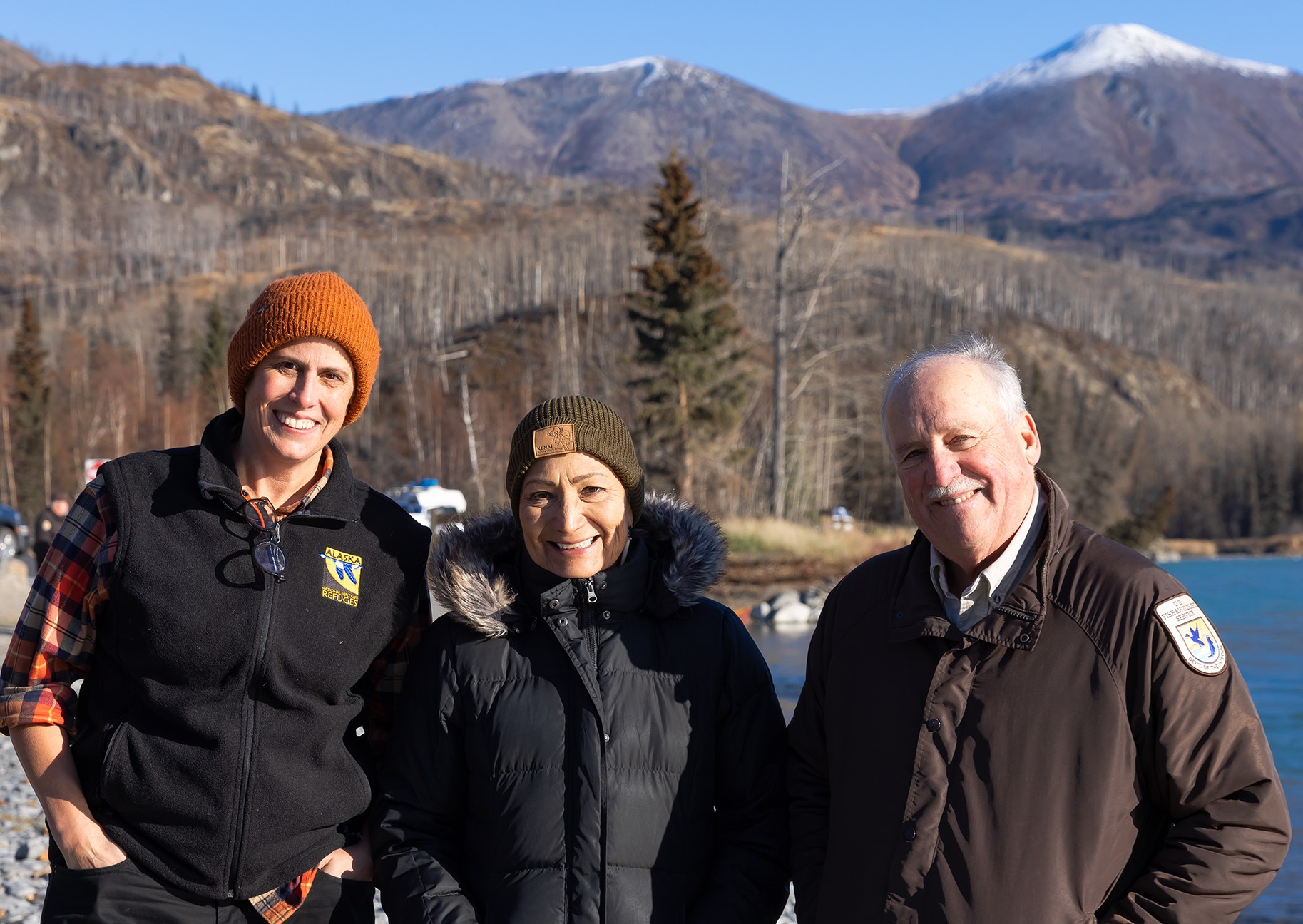
Sara Boario, USFWS Alaska Regional Director (left), and Andy Loranger, Kenai Refuge Manager, hosted the Secretary during her visit to the Kenai. “It means so much that the Secretary takes time to meet with us when she visits Alaska,” Boario said. “On each of her three trips she has prioritized time to listen and learn from our employees and share her support and encouragement for our work.” pc Lisa Hupp/USFWS
Earlier in the day she visited an upcoming fish passage project on Ninilchik Native Association lands that will allow salmon to return to a tributary of Deep Creek that flows from the refuge. Financed by the Bipartisan Infrastructure Law (BIL), the project is a partnership between the U.S. Fish and Wildlife Service (USFWS), the Kenai Peninsula Borough, the Ninilchik Native Association Inc., and the Ninilchik Traditional Council. Ninilchik Tribal leaders, President Greg Encelewski and Executive Director Ivan Encelewski, spoke with the Secretary about vital cultural traditions and the importance of salmon to Indigenous people. USFWS biologist Kyle Graham shared about the priority and need to increase habitat connectivity. Borough Mayor Peter Micciche also added his support.
Later in the day, she visited the refuge’s newly improved access to Kenai River at Jim’s Landing, partially funded by the Great American Outdoors Act. The Secretary walked the edge of the river, took photos as a pair of bald eagles flew overhead, and witnessed the final salmon lifecycle stages typical of late fall in Alaska.
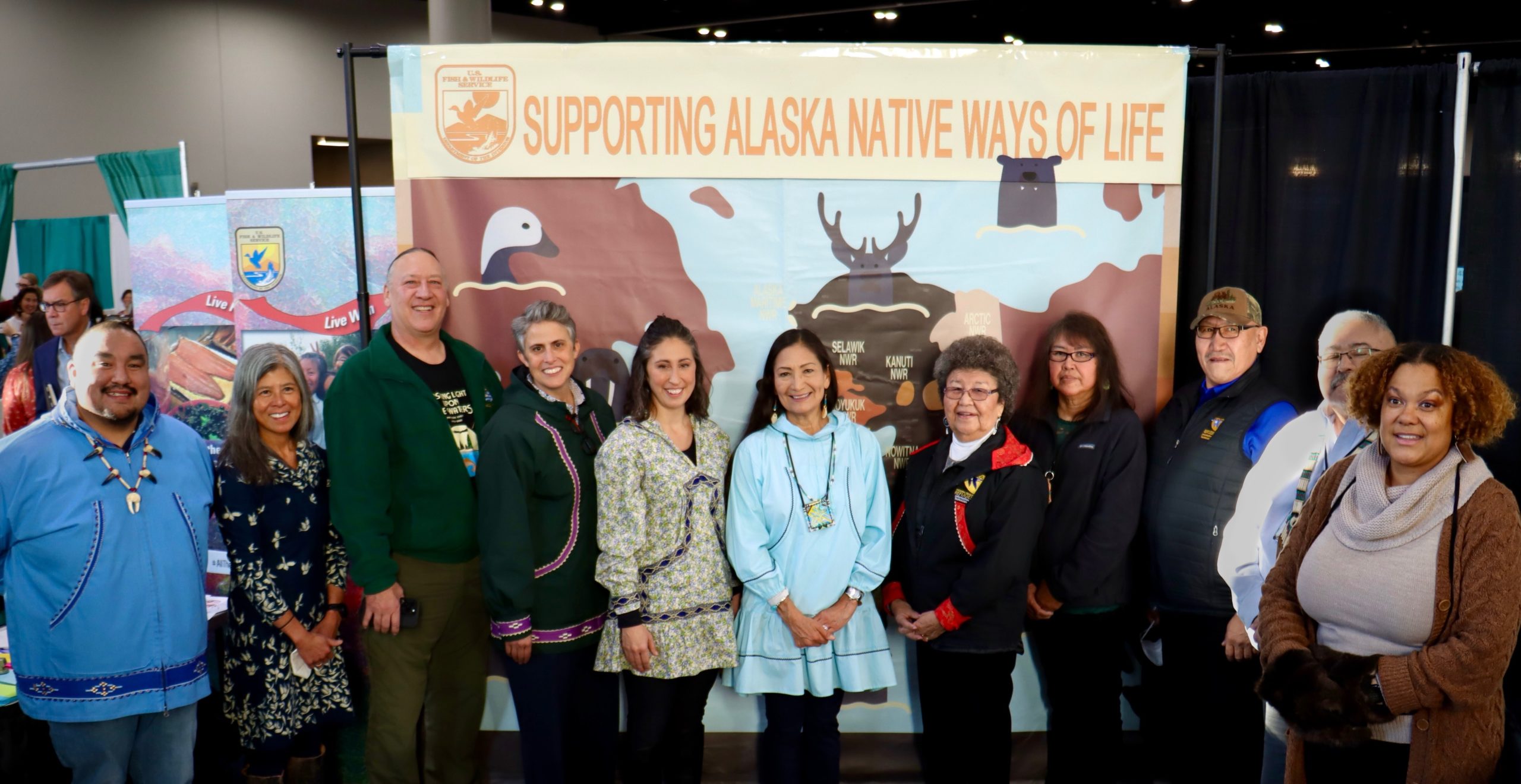 Secretary Haaland (center) on her visit to the FWS booth at AFN in Anchorage
Secretary Haaland (center) on her visit to the FWS booth at AFN in Anchorage
The Secretary also visited the Fish and Wildlife Service booth at the Alaska Federation of Natives (AFN) convention in Anchorage, where she met Refuge Information Technicians and Tribal Liaisons from across the state. Crystal Leonetti, Fish and Wildlife Service’s Alaska Native Affairs Specialist, reflected, “the Secretary so graciously shook each of our hands, asked us our names and where we work, and spent a few minutes with a youngster at one of the booth’s highlights – a kid’s coloring activity. It was a dream to spend just a few moments with her.
 Even K9 Officer Togo turned out with all the Kenai Refuge staff to be photographed with the Secretary in front of the Kenai Refuge’s Moose. pc Lisa Hupp/USFWS
Even K9 Officer Togo turned out with all the Kenai Refuge staff to be photographed with the Secretary in front of the Kenai Refuge’s Moose. pc Lisa Hupp/USFWS
Izembek Brant Project Report
by John Sargent, Fairbanks Friends Volunteer
John Sargent volunteered with U.S. Fish and Wildlife Service at the Izembek National Wildlife Refuge assisting with the Pacific Brant Age Ratio Study during October 3 to 13, 2023. Nearly all of the worldwide distribution of brant stage at Izembek Lagoon during the autumn migration before moving on to warmer climates in California and Mexico where they spend the winter months. Izembek Lagoon is also one of the largest concentrations of eelgrass in the world and was the first in North America listed as a Ramsar Wetland of International Importance.
The purpose of the study is to estimate the number of juvenile brant born this year relative to adults. This information will be used to determine the 2023 productivity of brant along the Pacific Flyway. By the end of the survey, we successfully met our goal of classifying 39,000 juvenile and adult brant in Izembek Lagoon! To access the lagoon we drove in pickups, walked in the tundra, boated in zodiacs and took side-by-side ATVs to get to more remote areas.
The Izembek adventure was scheduled to start on October 2, but was delayed one day because of the looming government shutdown that did not happen. Then, a few days later, while awaiting at the Anchorage airport for his flight to Cold Bay, John learned that his flight would be cancelled because of eruptions of the Shishaldin Volcano in the Aleutian Island of Unimak, west of Cold Bay. As the volcano calmed down, John and another volunteer, Catherine Trimingham, boarded the Aleutian Airlines flight to Cold Bay to finally start the Brant Age study adventure. While attempting to make a landing, at Cold Bay the plane lifted off again, presumably due to strong cross winds to make another attempt, which the pilot safety did. Such is life in one of the windiest and remote places in North America, and one of the most volcanically active regions in the world! Once at the refuge we settled in to the comfy house that served as the bunkhouse with full kitchen and hot running water.
Acknowledgements: John would like to thank the U.S. Fish and Wildlife Service, Izembek National Wildlife Refuge staff, especially Wildlife Biologist Alison Williams, Refuge Manager Maria Fosado, Biological Science Technician Cristina Trimingham, Wildlife Biologist Michael Swaim, volunteer Catherine Trimingham, and USGS Field Assistant Technician Evan Buck for field support, sharing field work, and making my stay and experience most enjoyable and memorable. Thank you all!
Bird and Wildlife Observed or reported on or near the lagoon:
Black brant (very abundant- 100s of thousands), cackling geese (abundant) northern pintail, mallard, harlequin duck, gadwall, Eurasian widgeon, green wing teal, emperor geese, white fronted goose (one), greater yellowlegs, large feeding flocks of rock sandpiper, dunlin sandpiper, bald eagles, short eared owl, marlin, peregrine falcon, glaucous wing gulls, juvenile Sabine’s gull, tundra swan, red breasted mergansers, Steller’s eider (one), black legged kittiwakes, snipe, fox sparrow (dark subspecies), willow ptarmigan, red necked grebe, Pacific loon, ravens, black billed magpies and Lapland longspurs. Also, wolf, brown bear tracks, brown bear scats, and diggings for ground squirrels; arctic ground squirrels; red fox, Pacific walrus (hundreds sunbathing), harbor seals and sea otters abundant feeding in lagoon. Coho salmon carcasses in creeks.
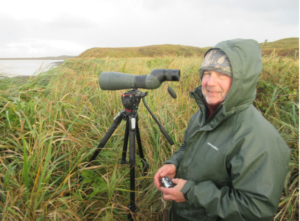
Ahhh… we finally made it to Izembek Lagoon to start the Brant Age Ratio Survey! The weather was blustery and we lucked out to have only limited rainfall, mild temperatures (mid 40s) and no further substantial eruption of volcanos! John Sargent counting brant.
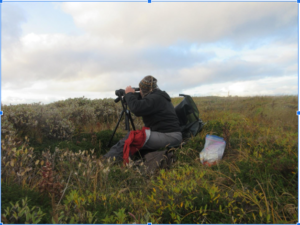
Mike wearing his comfy wool hat while characterizing brant juveniles and adults at Izembek Lagoon.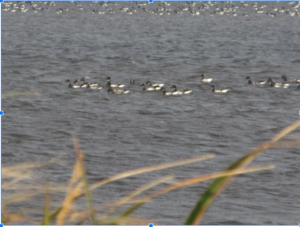
Brant geese at Izembek Lagoon.

Alison, Christina, Evan and Catherine counting a large flock of brant. Most birds were too far away from shore to count but with use of a zodiac we were able to access more out-of-the-way areas of the lagoon.
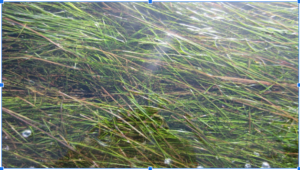
Zostera marina (eelgrass), one of many worldwide species of seagrasses. Brant forage almost exclusively on eelgrass leaves during their autumn in Izembek Lagoon. The seeds are an important food for dabbling ducks.
And the sun did shine a few times! This is the eelgrass beds during low tide. During low tide we walked the Zodiac to deeper water. This was fortunate because it enabled us to get up close and personal with the eelgrass, the productive muds rich in detritus, and the abundance of shellfish and crabs that inhabit this important resource. We also saw many sea otters and harbor seals in the lagoon, and a large group of sunning walrus near the entrance with the Bering Sea!
We rejoiced when Frosty Peak, a large volcano became visible on the last day of our survey.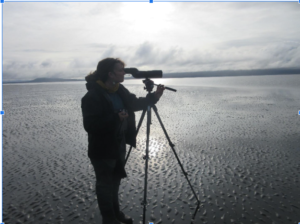
Izembek National Wildlife Refuge Wildlife Biologist, Alison Williams. surveying for brant at Izembek Lagoon. I thank her for her knowledge, skill at boat handling (especially in ocean swell near the outlet to the Bering Sea), and her kindness and graciousness during the survey work, planning, and making this a truly memorable experience.
October Advocacy Report: Arctic Leasing UPDATES & ACTIONS for you to take!
by Caroline Brower, Vice President for Advocacy
Two big things are happening this month: hearings and the comment period for the Draft Coastal Plain Oil and Gas Leasing Program Supplemental Environmental Impact Statement (SEIS) for the Arctic National Wildlife Refuge and Congressional shenanigans over funding of the federal government.
First, public hearings are underway on the SEIS regarding oil leases in the coastal plain of the Arctic Refuge.
-
Virtual public meetings – October 11th at 5pm and October 17th at 1pm.
-
Anchorage – October 16 at 5 pm at the Loussac Library
-
Fairbanks rescheduled to October 23 at 5 pm at a location TBD.
The comment deadline is October 23. Please attend virtually or in person if you would like to learn more or comment on the alternatives that the U.S. Fish and Wildlife Service and the Bureau of Land Management are looking at. The schedule and more information can be found here.
For more background on this issue, see the companion article. Need help preparing comments? Write to us at info@alaskarefugefriends.org and we will get back to you.
Please note that comments don’t have to be technical or detailed. You can simply express your preference for no leasing or drilling in the refuge, and state why you feel that way.
Second, funding for wildlife refuges is up in the air again. This next federal fiscal year runs October 1, 2023-September 30, 2024, and while refuges (and the rest of the federal government) are being funded by a bill that just extended last year’s funding by 45 days, this is not a permanent fix. All 16 national wildlife refuges in Alaska are underfunded to the point that many staffing positions are not being filled, and biological, management and visitor services work across Alaska is not being completed.
It’s not just the current year’s funding issues that are a problem. Funding for refuges has been extremely low for more than a decade. In the past, refuges had enough staff to actually run programs. Each refuge had a biology team doing waterfowl, moose, or bear surveys. They had a visitor services team doing community outreach and education at the refuge and at community events and in schools. They had full maintenance teams to regrade dirt and gravel roads and maintain facilities and vehicles, or the R/V Tiglax. Today, refuges are facing losing their staff by combining with other refuges, known as “complexing”, and in most cases, they are already down to bare-bones teams of biologists and other staff members. Funding has been on the decline since FY2010, and the gap is only growing wider with the conflict on Capitol Hill this month.
Alaska’s very own Senator Lisa Murkowski is the lead Republican on the Senate subcommittee that determines funding for Alaskan wildlife refuges. She needs to hear from her constituents that the current $541 million for wildlife refuges across the country is completely insufficient, and the true need for annual funding sits at $1.5 billion. We ask that you go to Senator Murkowski’s website and send her a message that refuges need an increase in funding. You can email her here.
Thank you for continuing to be great advocates for Alaska’s wildlife refuges.
How did we get to oil leasing in the Arctic Refuge and what can you do about it? Testify!
By Marilyn Sigman, Board President
Oil and gas development has been threatening the Arctic Refuge since 1980, when Congress passed the Alaska National Interest Lands Act (ANILCA) which protected much of the refuge but in Section 1002 opened up the possibility of oil development in the refuge’s coastal plain. In ANILCA, Congress also reserved the power to decide later whether to open it to drilling, a choice which was rejected for decades, until 2017. The Tax Cuts and Jobs Act of 2017 requires the Bureau of Land Management (BLM) to hold two lease sales no later than December 22, 2024, and added “provision of an oil and gas program” to the purposes of the refuge. A Coastal Plain Oil and Gas Leasing Final Environmental Impact Statement (EIS) was completed in September, 2019.
At the first lease sale, held on January 6, 2021, only 11 of the 22 tracts offered were sold. After the sale, two of the bidders relinquished their leases, leaving the State of Alaska’s Alaska Industrial Development and Export Authority, as the sole lease owner.
Friends had joined a coalition that unsuccessfully sued the federal government to stop this first lease sale. We then intervened successfully in a lawsuit to defend the authority of the Secretary of Interior to suspend the leases in June 2021. Friends also signed on to a letter with other organizations urging the Biden Administration to: 1) cancel the 2021 leases; 2) prioritize completing a robust SEIS that will assess the climate impacts and compatibility with U.S. climate goals; and 3) recognize the human rights issues for the Alaska Native communities that rely on Arctic Refuge resources.
Secretary of Interior Deb Haaland initially suspended the leases after a determination of an inadequate NEPA review and an illegal sale, and then canceled them outright on September 6, 2023. She said at the time: “With today’s action, no one will have rights to drill in one of the most sensitive landscapes on Earth. Climate change is the crisis of our lifetime. And we cannot ignore the disproportionate impacts being felt in the Arctic. We must do everything within our control to meet the highest standards of care to protect this fragile ecosystem.”
The second lease sale is now proceeding as required by the 2017 Tax Act. The Supplementary EIS (SEIS) is the Department of Interior’s attempt to remedy the inadequacies of the first EIS which led to the cancellation of the first leases.
What’s Being Considered in the SEIS and how should we comment?
The BLM has listed out 4 Alternatives. Alternatives B, C, and D propose leasing over a range of acreage from 49 to 100 percent of the 1.56 million-acre Coastal Plain. According to the SEIS, each of these three alternatives balances the five statutory purposes of the Arctic Refuge, the oil and gas leasing program and the four original purposes of conserving animals and plants in their natural diversity, ensuring subsistence hunting and gathering activities, protecting water quality and quantity, and fulfilling international wildlife treaty obligations.
Alternative A is the No-Action or no leasing Alternative, and would be our choice. The BLM, however, has determined that Alternative A does not meet the ‘purpose and need’ of the SEIS because it does not meet the requirements of the 2017 Tax Act to hold a lease sale, and is therefore not considering it. Friends have long opposed leasing of the Arctic Refuge, and will submit comments supporting action with the least impacts to the purposes for which Arctic Refuge was established. A robust showing of support from Alaskans for the strongest possible environmental protection of the Coastal Plain in your SEIS comments could discourage future investments in oil and gas leases in the Refuge and hopefully encourage BLM to reconsider their approach to Alternative A.
The Record of Decision that will follow the SEIS review will not authorize exploration and development but will determine which lands will be offered for lease and under what terms. Please see our advocacy column above for the schedule of public meetings on the SEIS and ways to submit comments by the deadline of October 23, 2023.
Photo: The Porcupine caribou herd travels ancient trails and fords many rivers to get to and from their calving grounds on the Arctic coastal plain and their wintering area in the mountains of Alaska and Canada. It is the largest land migration in the world. The calving grounds are under threat of oil and gas development in spite of the recent lease sale cancellations because of the 2017 Tax Cuts and Jobs Act which requires lease sales and made an oil and gas program a purpose. pc: Marilyn SIgman
Waterfowl on the Yukon Delta
Tuesday, October 17, 5-6 pm AKDT, Randall Friendly, Waterfowl Biologist
This presentation was recorded; watch recording below.
- Bethel – Randall, Yukon Delta National Wildlife Refuge Waterfowl Biologist, will be speaking live at the Refuge Visitor Center (across from the hospital) with potluck to follow. Bring your favorite dish to share.
- Homer – Watch Party with snacks at Alaska Maritime’s Islands & Ocean Visitor Center
- Soldotna – Watch Party at Kenai Refuge Visitor Center on Ski Hill Road
- Kodiak – Watch Party at Kodiak Refuge Visitor Center
The vast, watery Yukon Delta Refuge nestles between Alaska’s largest rivers, the Yukon and the Kuskokwim Rivers, where the tundra meets the Bering Sea. At 19 million acres, Yukon Delta has edged out the Arctic Refuge as the largest wildlife refuge in the country. Its diversity of habitats supports one of the largest aggregations of waterbirds in the world. Presenter Randall Friendly was raised on this land, went off to college and has recently returned as waterfowl biologist for the Yukon Delta Refuge. Let him show you his homeland and hear from him why waterfowl has so inspired him. He will talk about how and why the refuge manages waterfowl from banding programs with Cackling geese and Brant and capture-mark-recapture with Emperor geese.
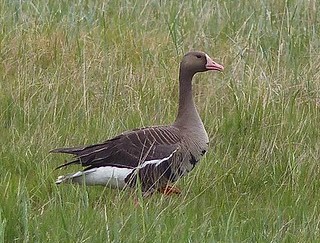 Greater White-fronted Goose, Kigigak Island, Yukon Delta National Wildlife Refuge pc: Kristine Sowl, USFWS
Greater White-fronted Goose, Kigigak Island, Yukon Delta National Wildlife Refuge pc: Kristine Sowl, USFWS
Biography by Randall Friendly: I am from Tuntutuliak a Yupik village of about 800 people. It is located along the Kuskokwim River on the Yukon Delta National Wildlife Refuge in western Alaska about 40 miles downriver from Bethel, the largest town on the Delta. I grew up with a subsistence lifestyle of hunting and fishing with my family. I found out I wanted to work with ducks and geese after my first season working as a technician for the US Fish and Wildlife Service working in remote places on the Yukon Delta. I saw how incredible it was to see the diversity of nesting birds like on Kigigak Island. Since then, I decided one day I wanted to continue working with waterfowl and learn more about them. With mentoring by ANSEP (Alaska Native Science & Engineering Program) I studied for my Bachelor’s at the University of Alaska Anchorage in biology. I completed my Master’s from the University of Alaska Fairbanks this summer in wildlife biology. My thesis was on threatened Spectacled Eiders and how their wintering conditions affect reproduction. While in college, I had a chance to work on Kodiak, and Arctic Refuges as well as Yukon Delta. What I like most about my job is that I get to work with amazing people who are enthusiastic about wildlife and that I get to work outside of the office environment.
I recently moved to Bethel to work full time for the Yukon Delta Refuge as a waterfowl biologist. I have been enjoying some family time after being away for college for quite some time. I like to spend time outdoors whether it is fishing, hunting, or gathering. Having moved to Bethel, I am looking forward to the opportunities to enjoy the outdoors with family and friends.
Read an interview with Randall about how the ANSEP program welcomed a boy from the village and helped him realize his dreams. And hear from Randall in this podcast about his hopes for his work, a chance to inspire others and his masters work on spectacled eiders.
In the Field: Friends Volunteering
by Poppy Benson, Friends Board Vice President
It was a busy September for Friends with volunteers helping with the Walks for the Wild, our September meeting and our special event. But three Friends were far afield with Meg Parsons of Anchorage and Mike Coffing of Homer at Izembek Refuge and Caroline Brouwer, currently from Hawaii, at Kodiak Refuge. Here is what they had to say.
The Izembek Quonset Hut Hustle: Wind, Wildlife and Wide-open Views
By Mike Coffing
Winds of 37 knots with gusts to 60+ knots were my welcome to Izembek Refuge at Cold Bay! Although the winds were always blowing, they were usually not as strong and were much more friendly most of our stay. The warm smiles, friendly and supportive Izembek Refuge staff were absolutely amazing. We were there to help clear out a large, WWII era, Quonset hut located 10+ miles north of Cold Bay and near Izembek Lagoon. During each round trip with the pickup truck, hauling 15 loads of equipment and supplies from the Quonset to the Refuge HQ in Cold Bay, our eyes were scanning the roadside “tundra” and open horizons for wildlife. We were never disappointed. After the day’s work of lifting, loading, hauling and unloading supplies, the warm refuge bunkhouse with the full kitchen, hot showers and comfortable beds was most relaxing.
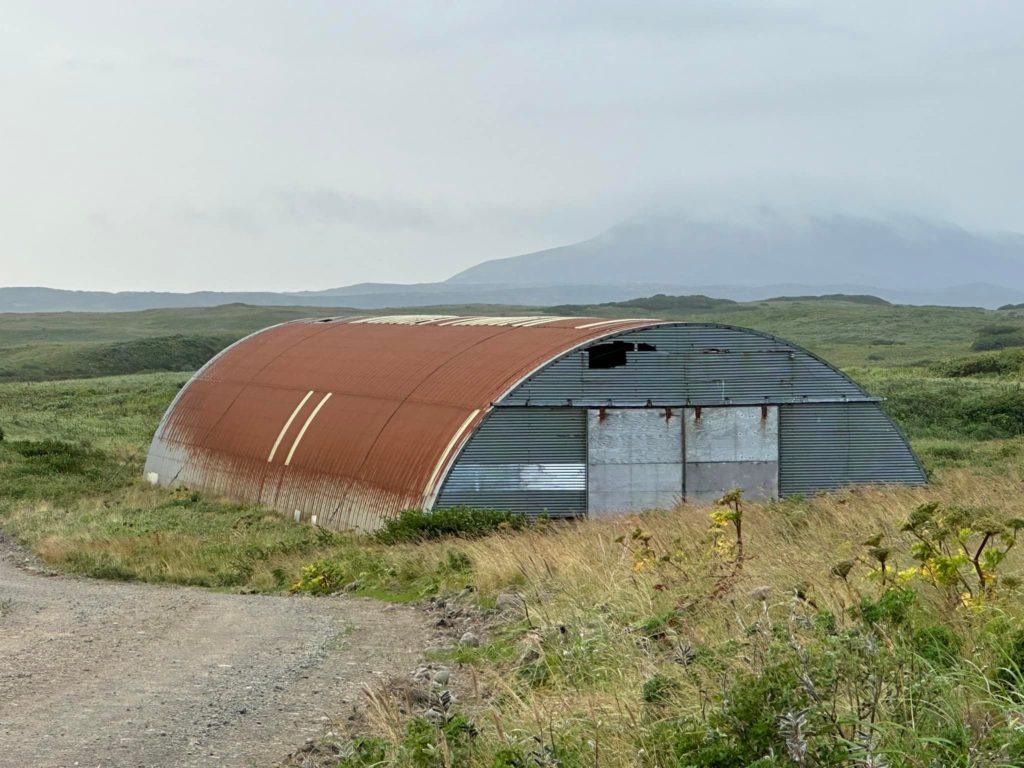
Meg Parsons added:The Quonset hut is huge- unlike any I have seen previously. It was full of an assemblage of Refuge materials- research equipment and building supplies which was very like many homesteads I have experienced. One keeps things since it could be possible to use in the future. pc: Meg Parsons
We got in on one of the biggest local events of the year, the 3-day Labor Day Silver Salmon Derby, where we helped by weighing in fish. A kickoff “Ribs/Chicken and ALL the fixings” dinner, a polar plunge, a bonfire and potluck added to the fun.This annual fundraiser supports the Cold Bay Emergency Services.
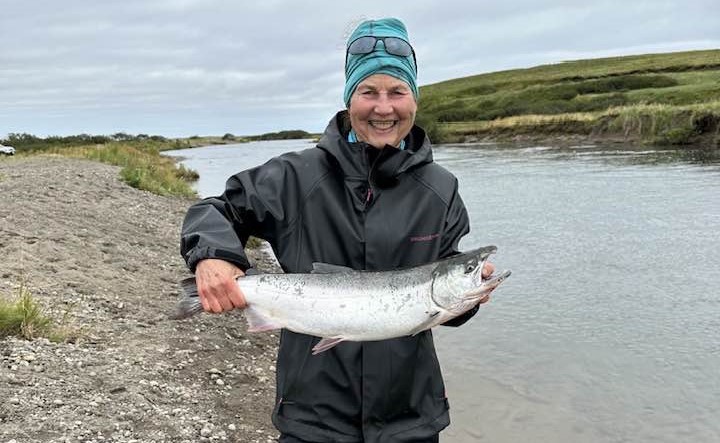
Meg Parsons at Russell Creek with her first ever silver salmon. She said of her arrival at Izembek, “I flew from Anchorage to Cold Bay with the view of cloudy blue skies opening up to view the terrain of water, remote islands, and volcanoes. A great start to an area new to me and my excitement was exhilarating!” pc. Laticia Melendez/USFWS
Our last day we accompanied refuge staff when they gave a Refuge tour, using two small busses and two pickup trucks, to arriving passengers on the Alaska Ferry Tustumena from town to Grant’s Point, located at the edge of Izembek Lagoon. Meg added that “I enjoyed extending enthusiasm and appreciation of Izembek to the ferry passengers.”
Working at Izembek Refuge was a great experience. Thanks to Matthew and all the Refuge staff for having us.
_______________________________________________________________________________________
An Incredible Time at Kodiak: Bears, Coast and a Wonderful Staff
By Caroline Brouwer

L-R Caroline Brouwer, Sierra Speer, Erin Strand, Patricia Prince, Natalie Fath, Danielle Fujii-Doe in the Kodiak Visitor Center. pc: USFWS
Overwhelmed with cruise ships at a low staff time of the year, Kodiak National Wildlife Refuge asked for a Friends volunteer to help in September at their Visitor Center. Alaskan brown bears, whales, and talking about the National Wildlife Refuge System are some of my favorite things, so I jumped at the opportunity to apply and was lucky enough to be selected by the refuge.
I got to Kodiak Island just in time for the silver salmon run to start and the frenzy of bears feasting on salmon, fattening up for the winter. It’s been a dream of mine for years to go see the island, the refuge, and its bears. The bears, I saw, in droves. But Kodiak Refuge is so pristine partially because its not on the road system, so I spent my free hours hiking on non-refuge lands and gazing in awe at the beautiful islands and coastline.
Four out of the 10 days I was on the island, were cruise ship days with passengers flooding the town. Over 1,600 passengers passed through the Visitor Center on those four days, which was a great opportunity to talk about refuges and wildlife. One of the glorious things about the Refuge System is that refuges are not as highly visited as National Parks, offering a more solitary experience than parks. The downside is that many people have no idea what a refuge even is, or that there is this incredible System of public lands set aside for wildlife of which Kodiak is just one piece.
Education is part of our Friends mission: teaching visitors about wildlife refuges, and the importance of refuge habitat and species protection. They can then become stewards and advocates for refuges.
The Kodiak staff were incredible and capable, but, like most refuges, they have lost much of their capacity to complete critical tasks due to budget cuts. It was valuable to me as Friends Advocacy Committee Chair to see this for myself. Our advocacy column in this same newsletter is devoted to the budget, so please click on that article as well to hear how the funding fiasco currently happening in Washington, DC is affecting refuges on the ground.
Many, many thanks to the talented Kodiak Refuge staff, particularly Mike Brady, Danielle Fujii-Doe, Natalie Fath, and Amy Peterson and hardworking, generous and knowledgeable volunteers and seasonal staff– Sierra, Patricia, Nicole, Jan, and Stacey. A special shout out to Erin Strand whom I credit with keeping me alive by teaching me everything I know about bear safety, as we staffed a community event at the Coast Guard base. Thank you to everyone for making this trip so incredible. I hope I was able to give back as much as I received!

My last night was the most exciting (terrifying? incredibly stupid?) part of the trip. I went to the Buskin River to catch one last glimpse of the magnificent bears. The only bear I saw was in the process of expelling a huge tapeworm from his rear end. Fascinated, I watched him while he ate salmon. I lost sight of him, then heard him splashing loudly in the river too close to me. I hustled out of the area and turned on the video on my phone as I walked away, and then – well, see for yourself.
For an explanation of tape worms in Alaskan bears … check out thisarticle
